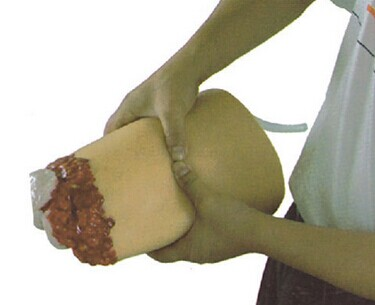18-04-2024
ADA MED SUPPLY LIMITED
Trauma to the lower limbs, especially severe limb injuries, often poses great challenges in medical emergencies. Quick and accurate hemostasis is the key to successful treatment. For this reason, the lower limb traumatic amputated limb hemostasis model emerged as the times require, providing a safe and effective training platform for medical staff.

With its highly simulated characteristics, this hemostasis model has become an important tool for medical staff to improve their hemostasis skills. The model can simulate a variety of injuries caused by lower limb trauma and amputated limbs, including fractures at different locations, varying degrees of bleeding, etc., allowing medical staff to truly feel the urgency and complexity of the treatment scene during training. Through repeated operations, medical staff can master hemostasis techniques and improve treatment efficiency.
In addition, the lower limb traumatic amputated limb hemostasis model is easy to operate and easy to carry. Whether inside the hospital or at a wild rescue site, medical staff can be trained anytime and anywhere to ensure that they can respond quickly in emergencies. This flexibility makes hemostasis models an integral part of medical emergency training.
It is worth mentioning that the lower limb traumatic amputated hemostasis model also plays an important role in improving the psychological quality of medical staff. Many health care workers may feel nervous or fearful when faced with real injuries and bleeding. Through model training, medical staff can gradually adapt to this pressure in a safe environment and improve their ability to respond to emergencies.
With the continuous advancement of medical technology and the increasingly perfect first aid system, the application prospects of the lower limb traumatic amputated hemostasis model will be broader. In the future, we can expect this model to achieve more innovations in materials, functions, intelligence, etc. For example, more advanced materials are used to make models to make them closer to real human tissues; more functions are added, such as simulating blood pressure changes, drug reactions, etc., to make training more comprehensive; intelligent technology is introduced to realize automatic recording and recording of models feedback to provide more accurate guidance for medical staff.
In short, the lower limb traumatic amputated hemostasis model plays an important role in improving medical staff's hemostasis skills, improving treatment efficiency, and improving psychological quality. With the continuous advancement of technology and the continuous expansion of application scenarios, this model will become an indispensable part of medical emergency training to protect the life safety of patients.